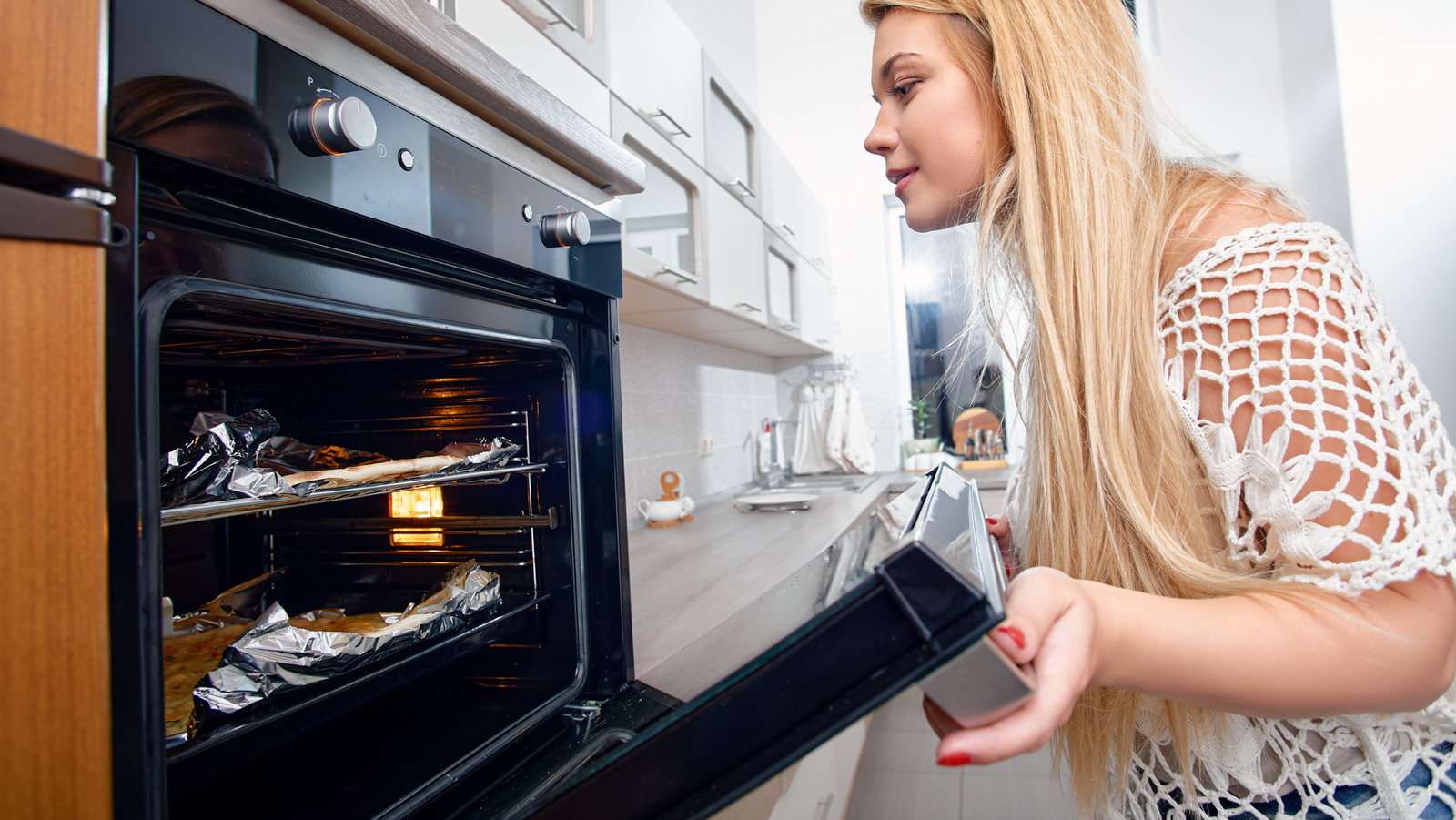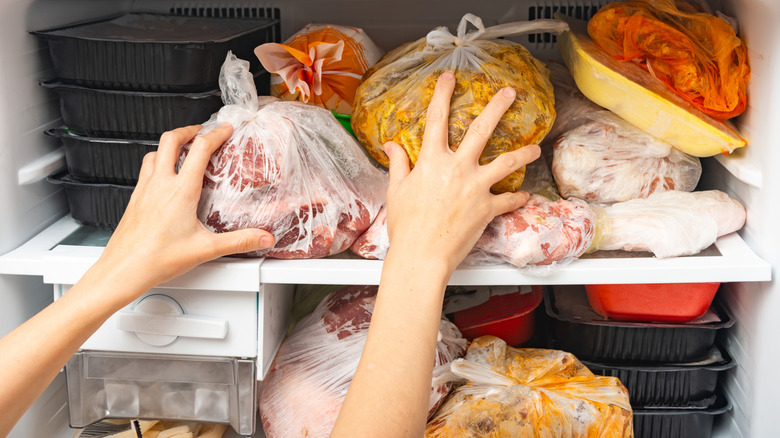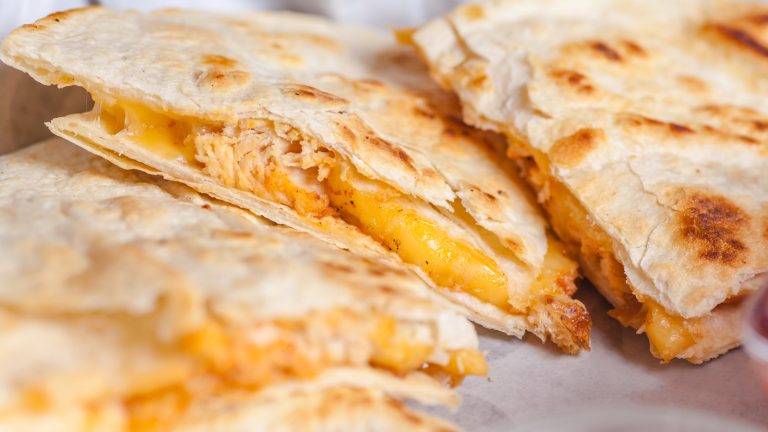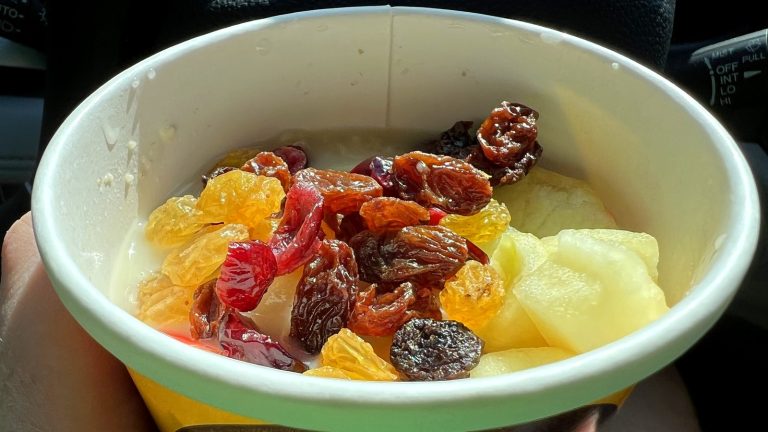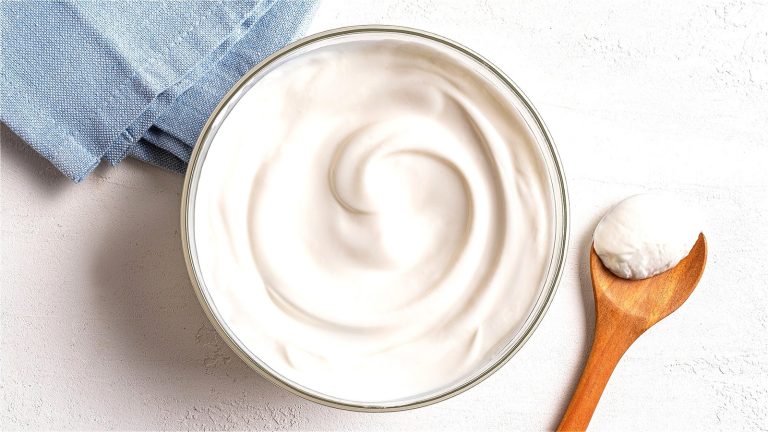When you have a busy workweek, frozen foods come in clutch. There’s no need to worry about them rotting or going bad in your refrigerator, and you can just pop most of them in the oven for a satisfying reheat (more satisfying than, say, your microwave). However, some people put the frozen food in the oven before it’s preheated, thinking they’re saving time by exposing it to more heat for longer. But as Maricel Gentile, chef and owner of Maricel’s Kitchen and author of “Maricel’s Simply Asian Cookbook,” told us, they need to stop doing that.
“When you put frozen food into a cold oven, it starts to thaw unevenly,” she explained to Food Republic. The outer layer ends up warming faster than the inside, which can lead to soggy textures and inconsistent cooking. But it’s not just a matter of how the food feels — according to Gentile, it can also mess with food safety, especially for proteins, because they may linger too long in the “Danger Zone” (which is between 40 and 140 degrees Fahrenheit). “The Danger Zone is where bacteria grows fast,” she cautioned.
Waiting to preheat your oven helps ensure the whole dish starts cooking evenly right away. “It’s like giving your food a proper runway to rise, crisp, or caramelize the way it was meant to,” she added.
Some frozen foods are more forgiving than others
Of course, some frozen foods fare worse than others with a cold start in a non-preheated oven. “Anything breaded, battered, or meant to be crispy like egg rolls, frozen lumpia, or even frozen fish sticks, really suffers in a cold oven,” Maricel Gentile said, explaining that the coating on these types of foods absorbs moisture as it sits, which can turn it mushy instead of crunchy.
Gentile also indicated that delicate items like phyllo dough or puff pastry may lose their flakiness this way, too. A cold oven is just warm enough to melt the exterior layer, but not hot enough to quickly steam off the moisture — so everything becomes soggy.
Hearty baked dishes — such as this steak and ale casserole — or dense lasagnas, on the other hand, can sometimes survive a cold start when frozen. However, there are caveats. “You’ll still sacrifice browning on top and possibly end up with uneven centers,” Gentile explains. Frozen veggies or pre-cooked rice dishes, she noted, are usually more forgiving — especially if they’re covered and baked slowly. As it happens, frozen pies also benefit from a cold oven start, since putting them in once the oven is already preheated can cause the crust to burn.


